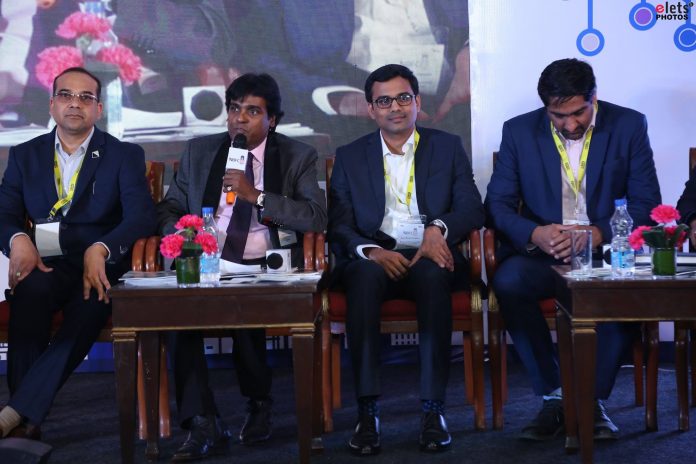 Technology and innovation are affecting financial services in a massive way. Be it the rural areas or the urban populace, touch of technology has brought a paradigm shift across the financial landscape and therefore, refurbishing the customers’ requirements. But despite all the benefits associated, technology also has a side that worries experts across the sector.
Technology and innovation are affecting financial services in a massive way. Be it the rural areas or the urban populace, touch of technology has brought a paradigm shift across the financial landscape and therefore, refurbishing the customers’ requirements. But despite all the benefits associated, technology also has a side that worries experts across the sector.
According to PwC Financial Services Technology 2020 and Beyond, 81 percent of banking Chief Executive Officers are concerned about the speed of technological change, more than any other industry sector.
Making a strong mark in this regard Business Intelligence tools and advanced analytics is enhancing the banking operations by identifying patterns, analysing connections, addressing and resolving issues in real-time etc. Several financial institutions have already started deploying the same and started getting benefits from BI technology. However, its full potential is yet to be explored.
“There should be proper coordination between Business Intelligence (BI) tools and advanced analytics. Lack of this coordination between these two can increase the cost and efficiency among the banking and finance institutions. Because both these techniques are completely different and we are putting them together to function in alignment,” said Venu Kumar Panjarla, CAVP-Technology, Margdarshak Financial Services Ltd.
According to an EY and the Associated Chambers of Commerce and Industry of India, report published in 2017, India’s banking system is struggling in terms of physical infrastructure. It found that 19 percent of the population still lacks access to the formal credit system.
However, according to the World Bank, policies implemented by the Central Government has helped bring 310 million people into the formal banking system in just four years.
Talking about the role of technology in boosting Financial Inclusion across the rural areas, Suresh A Shan, Head-Innovation & Future Technology, Mahindra Finance said, “In rural India, customers want the services to be simple with proper reach and speed. They want technology to reach the last-mile and solve the challenges faced. In my view, analytics and all new techniques and technologies should focus on serving the rural customers in getting a way out and reaching the relevant banking services.”
However, despite having the power of reinventing the financial institutions and services across the rural parts of the country, technology and its deployment has to grow through a lot of challenges.
Explaining the challenges faced by the financial institutions in terms of tech-implementation, Dominic Vijay Kumar, DVP & Head-IT, ART Housing Finance Ltd said, “One of the biggest challenges that we face in the rural areas within the affordable housing segment is the verification of KYC. To verify the physically filled in details in our digital setup we need an OTP that gets generated and received at the customer’s registered mobile number but due to lack of proper digital awareness we fail to receive a response within 30 seconds and it expires by the time customer responds.”
Playing a significant role in boosting the level of banking services in alignment with technology, Aadhaar since its inception has helped overcome several challenges hindering the growth of Financial Inclusion.
“KYC has been a long journey, starting from the mechanism from where banks used to ask for a reference of a person who holds an account in the same bank/branch to an era where banking and financial institutions started verifying a customer’s identity on the basis of a government-issued identity card. Aadhaar has played a major role in revolutionising this segment and bringing e-KYC into life,” said Varun Guliani Head-IT, India Shelter Housing Finance.
There are several benefits of deploying technology in the banking system but with tech-driven initiatives, the risk of rising cyber frauds is also associated. As per a Reserve Bank of India report, a total of 2,059 cases of cyber fraud worth Rs 109.6 crore were reported in 2017-18 as compared to 1,372 cases amounting to Rs 42.3 crore.
“There are two types of frauds that we come across in NBFCs, some occur internally while others come from external sources. During the acquisition of the clients, we have observed that fake Know Your Customer (KYC) are used by the clients and ultimately leads to fraudulent activities. Similarly, in terms of internal cases, we have witnessed that employees with the help of clients or sometimes due to carelessness give rise to frauds,” said Bipin Sharma, Chief Financial Officer, Subhlakshmi Finance Pvt Ltd.
Talking about how technology alone cannot be blamed for every cyber attack, Durgeshwar Mishra, Head-Innovation & Future Technology, Mahindra Finance said, “I have witnessed the transition of the Indian banking system from traditional methods to tech-driven techniques. Blaming technology for the rise of frauds is incorrect because the menace of fraudulent activities was a part of the banking sector during the traditional era as well and it continues to maintain its momentum now as well. Frauds sustain but the modus operandi changes.”
Elets The Banking and Finance Post Magazine has carved out a niche for itself in the crowded market with exclusive & unique content. Get in-depth insights on trend-setting innovations & transformation in the BFSI sector. Best offers for Print + Digital issues! Subscribe here➔ www.eletsonline.com/subscription/





















